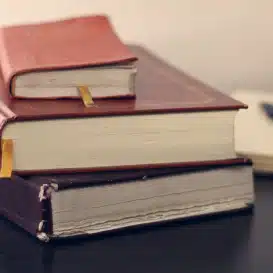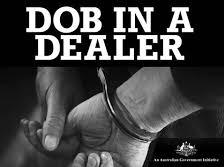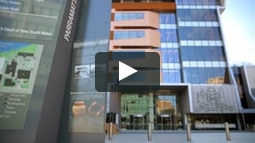The “Dob in a Dealer” campaign – will it work to get ice off of our streets?
The ice epidemic in Australia has left no one unscathed. Ice is in our schools, work places, homes and on our highways. According to statistics almost half a million adults in Australia are currently using ‘ice,’ a crystalized, purer version form of methamphetamine.
As part of its “additional $300 million over four years funding to improve treatment, after care, education, prevention, support and community engagement,” the Commonwealth government has also introduced a new “Dob in a Dealer” campaign in its fight to get ice off Australian streets.
Is the “Dob in a Dealer” campaign worth our hard earned Australian tax dollars or is it just another of Mike Baird’s “prohibitionist” methods of dealing with drugs?
We are spending more and more money on NSW’s war on drugs but with little to show for it. Last June the Commonwealth government “splashed $20 million on anti-drug ad campaigns,” according to the Sydney Morning Herald, and now $1 million will be specifically earmarked for the new “Dob in a Dealer” drug hotline. However, demand for the drug is increasing. According to the 2013 National Drug Strategy Household Survey, Australia has the third highest rate of users in the world with over 2.1% of Australians using methamphetamines.
Is “Dob in a Dealer” the best we can do? The ice epidemic has escalated out of control. Our gaols are brimming past capacity as we fill them with ice addicts and petty dealers, costing the NSW government millions of dollars in court costs and incarceration fees. However, the best response the government can come up with critics say is an ineffective and expensive media campaign.
What is “Dob in a Dealer” all about?
The “Dob in a Dealer” initiative, the brainchild of former Prime Minister Tony Abbott, is a joint “community engagement” effort between Minister for Justice, The Hon Michael Keenan and Crime Stoppers Australia. It calls on local residents and law enforcement agencies to work together to provide local intelligence on illicit drug activities in their neighbourhoods.
According to Crimestoppers, it is a “safe and secure way” for citizens to “confidentially report information” about those in the manufacture and distribution of ice and other illicit drugs and is something they can do to make their communities safer.
Who is the “Dob in a Dealer” really targeting?
People in favour say that “Dob in a Dealer” will decrease demand for the drug because it will give police intelligence on backyard drug labs and local dealers. As Mr. Abbott told News Corp, “information from the public is an essential part in helping police and other agencies bust drug manufacture and distribution.”
But who gets caught when you “Dob in a Dealer”? Is it the heads of the large drug syndicates living in their million dollar mansions driving fancy Ferraris or is it the low level users and petty dealers on the street?
Our courts and jails are almost at the breaking point. Take the Parklea Correctional Centre for example, it is so seriously overcrowded that it is busting at 51% over capacity. However, there has been little impact on the biggest players in this drug scourge – organised crime. High end dealers are just getting more sophisticated while government spends money and resources focusing on getting the general public to snitch on their friends, families and neighbours.
Matt Noffs of the Sydney Morning Herald says we should be spending our money on more treatment services and early intervention programs. Not on media campaigns that do not work.
According to Drug Info, “7.0% of Australians aged 14 years and over have used meth/amphetamines one or more times in their life.” This ice pandemic is devastating our communities. Critics say it is the major crime bosses we should be targeting not their victims. Encouraging people to tattletale on each other will not get ice off our streets.
Even the Liberal party in a February 22 news release highlighted The National Ice Taskforce Final Report, which stated, “the most important strategies to protect Australia from this devastating drug – and the violence it causes – is to disrupt supply and reduce demand, and that there needs to be” greater efforts to prevent ice reaching our regional and remote communities.” We can do this using prevention and rehabilitation strategies.
According to Noff’s article, the NSW Bar Association after hosting a conference on ‘Drug Law Reform’ said our “prohibitionist” approach in dealing with illicit drugs “has substantially failed in that it has had limited effectiveness in reducing drug availability or drug use” and “the harms resulting from [this] approach for drug users and the wider community are considerable.”
They further argue that Anti- Drug ad campaigns do not work. Just look at the US. 1.2 billion that was spent between 1998 and 2006 on a National Youth Anti-Drug Media Campaign. However, according to US Bureau of Justice Statistics more than a quarter of a million people were incarcerated by the end 2011 and more than half were for drug crimes.
Supporters on the other hand highlight the success of the Victorian based model, which saw, according to former Prime Minister Abbott, a “100 percent to 400 percent” rise in community-assisted drug intelligence in areas across the state. Did that increase in drug intelligence result in undermining the criminal business models; or was it just, as Matt Noffs says “our children who end[ed] up in the justice system.”







